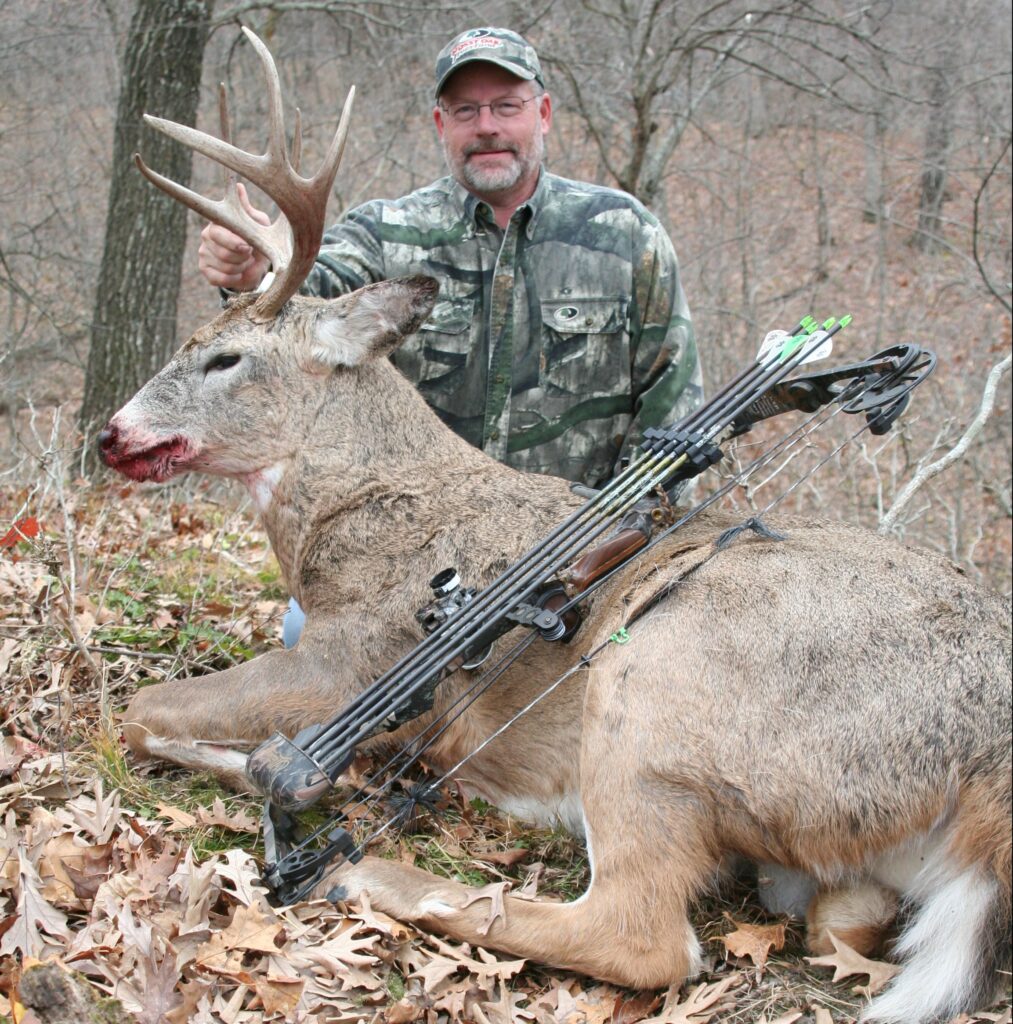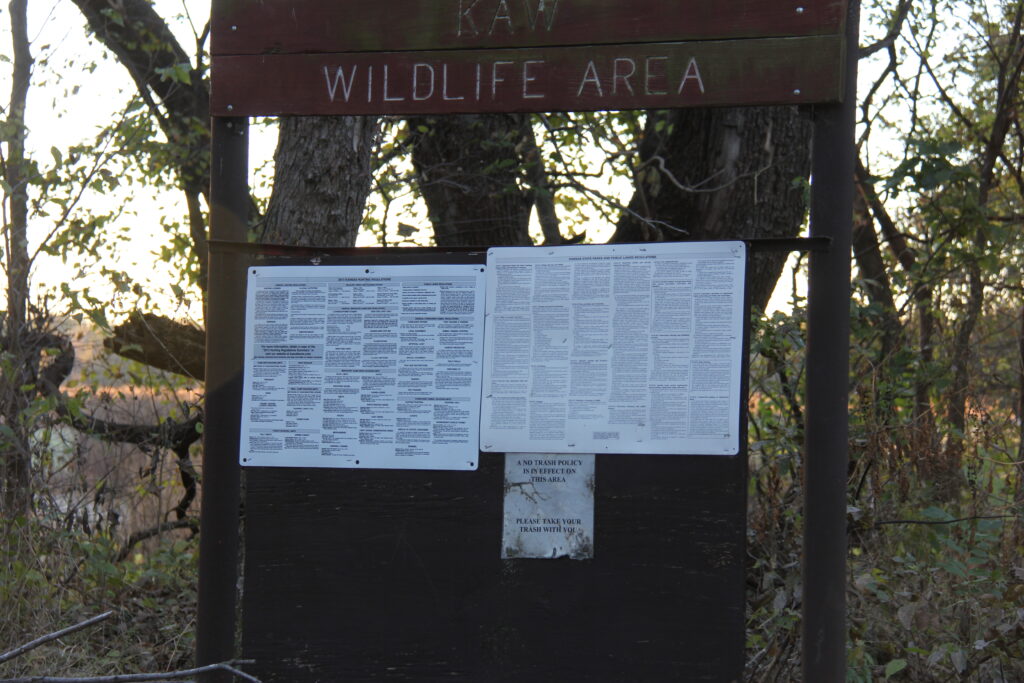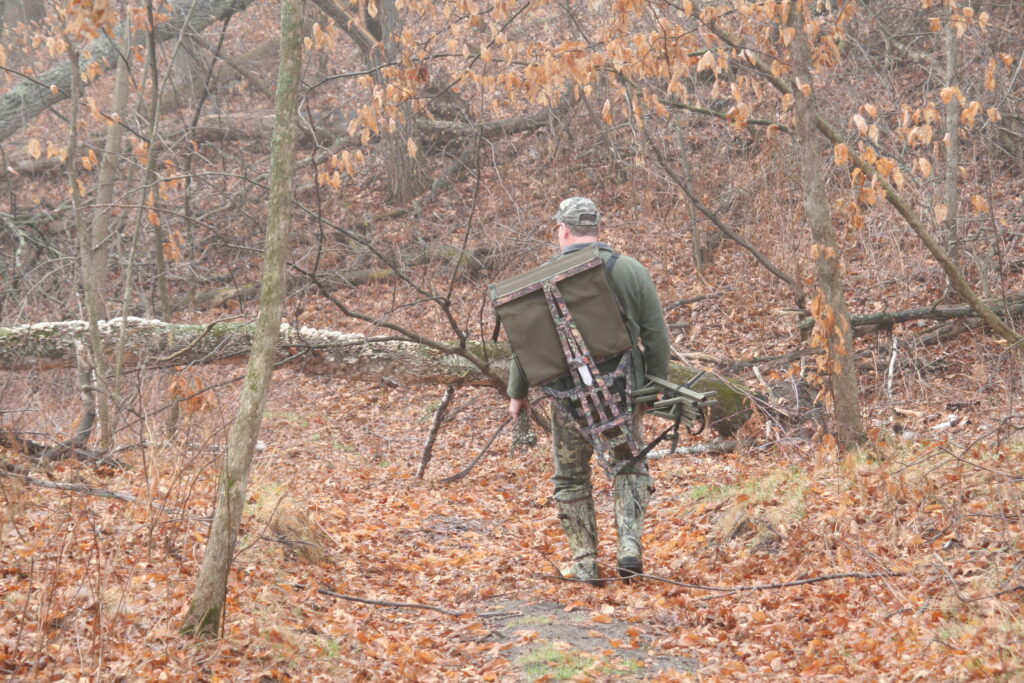by Bernie Barringer
A road trip to a new area on a DIY public land hunt can be very intimidating. Consider these ten points that will up your odds of success.
The clashing of antlers in the creek bottom set my heart to pounding. I quickly put my binoculars up to my eyes but I could see nothing through the brush despite my 20-foot-up position. The noise was coming from a bedding area 70 yards away and it was clear two bucks were duking it out down there. I was deep into a public hunting area in Central Iowa, and I had put many long hours in several tree stands waiting for the right moment. Not to mention the three year wait it took just to draw the tag. This day it was an hour after daylight and I had planned to spend the entire day in this particular perch.

Suddenly, two deer came crashing toward me, a 3- year-old 8-point followed by a heavy, mature buck with thick shoulders and a muscular neck. The younger buck raced on by but the larger one stopped in a shooting lane 40 yards away. His rack looked small sitting on top of the body of a big old warrior. I had a split-second decision to make; I had passed up larger bucks earlier in the hunt, and this is not the kind of rack I dream of taking home with me when I come to Iowa. On the other hand, it was the 12th day of a 7-day hunt. I still had Kansas and Missouri tags in my pocket and November was slipping away. I settled the pin and touched it off.
Going to a new area and hunting on public land is a huge step. Most bowhunters are intimidated by the thought of just loading the gear in the truck and taking off cross-country to hunt a place sight unseen. They needn’t be. Here are a few steps that will increase your odds of being successful.

- Choose the right state. There are many variables you must consider when deciding where to hunt; the distance from home, trophy potential, availability of public land, cost of the tag, time it takes to draw a tag, and competition among hunters. If you need a couple years to save for the trip, start buying preference points in Iowa right now. If you want an over-the-counter tag for this year, consider states like Wisconsin, Missouri, North Dakota or Kentucky. Kansas, Illinois and South Dakota have application processes but you can get a tag every year in most zones. Learn the process and then choose the state that’s right for you.
- Choose an area within a state. Several states have Walk-in areas that are private land open to sportsmen. Some states have state forests or areas with large amounts of public hunting land. In fact, there are great trophy potential areas in many states but only in small sections of the state. Do your research to find the areas with a large amount of huntable land. The Boone & Crockett club’s Trophy Search function on their website allows you to search for the best counties in each state. Hunting forums for the various states are good places to ask questions. Bowhuntingroad.com, a site dedicated to road-trip hunters, offers helpful reviews of each state with maps of the best counties. I can be helpful to call the state’s deer biologist.
- Begin to narrow down a specific hunting area within that section of the state using Google Earth, topo maps and state DNR websites. Most states’ DNR websites have maps of each public hunting area. Compare them with aerial photography and start looking for stand locations that look good “on paper.” They don’t always look the same when you get on the ground but I have found some terrific rutting funnel locations before I ever left home.
- Once you arrive, do your footwork. Put your walking boots on and walk it out, searching for clues to current deer patterns and behavior. You need to take risks that you wouldn’t otherwise take hunting at home. You would never walk right through a bedding area or carefully search out a core area if you plan to hunt a piece of property for an entire season, but if you are only going to be there a few days, you need to know the area intimately, and the only way to do that is to get up close and personal. You are looking for the right tree; the tree you will eventually kill your buck out of. The only way to do that is to eliminate all the other trees! Keep in mind that you are not just looking for a great spot, but you are also eliminating spots, so the more you walk the more confidence you will have in the spots you finally choose.
- Utilize trail cameras. As soon as you arrive and get your boots on the ground you should be looking for places to put trail cameras and inventory the deer population. Trail cams also help you learn travel patterns. Pictures will help you figure out the stage of the rut, or where the deer are in their daily feed to bed patterns if it is not during the rut. I put cams on trails, rubs, scrapes, waterholes, bedding areas and field edges. It is not uncommon for me to have ten cameras out the first few days. When I feel like I have gathered the information needed, I cut back to just a couple that can be checked every day. On public land you may lose cameras to theft. It’s a fact of life and I try to just look at them as overhead expenses. Like a tank of gas, you just have to go get more when you run low.
- Don’t get in a stand too soon. It’s very tempting to get up in a tree when you find a spot that looks promising. But what if there is an even better spot just over the hill? It’s a lot easier to park yourself for an entire day in a spot when you have confidence that you are in not just a good spot, but the best spot. I like to spend the first evening after arriving sitting on a high point with a spotting scope. I watch the deer movement patterns and gather information about the deer population in the area. At times I may just gather information for a day and a half before I ever climb a tree. Resist the temptation to put up a stand at the first place you find that looks really good.
- Go deep. The vast majority of the local hunting pressure on public lands is within a half mile of the road. You will have to work your tail off to get to the best stuff. You must decide if you are on vacation or if you are going to hustle and bust your hump to get a buck. This is especially true after a week of getting up early and moving stands, checking trail cams, and working hard every day. Are you going to be lazy and hunt that stand in a marginal wind, or are you going to hustle out there and put another one up for the day’s wind direction? You will get out of your hunt what you put into it. Only you can decide how hard you are willing to work, and only you can push yourself to put forth the extra effort it takes to be successful.
- Cut costs on lodging and food. I have found creative ways to cut costs so I can hunt more. I have stayed in small-town motels that offered me a week for $200. I had to pay the $200 even if I shot my buck the first day to get this deal but it works. I have a travel trailer that I stay in at times. I spent the 12-day Iowa hunt I mentioned earlier living in my trailer in a buddy’s driveway. I have a small chest freezer in the trailer filled with food for the trip, and it was filled with venison on the way home. I have stayed at a Bible camp that rents out their cabins during the fall, and I have even camped in a tent. Eating out at a restaurant will add hundreds of dollars to your trip. I like my hot meals and I have learned methods to keep my motivation up by eating well. Most days, a crock pot full of chili, a roast, stew or even BBQ ribs is waiting for me when I come back after a long, cold day in a stand. A container with a frozen roast and all the trimmings can be dropped in the crock pot in the morning, and by the time I get back in the evening the motel room smells delicious. A cold roast sandwich makes for a nice snack the next day. I admit that despite the fact I walk miles and generate a lot of sweat on these trips, it’s no weight loss program for me because I eat like a king.
- Don’t set your standards too high. Keep in mind that what you see on outdoor TV is not what you are going to face when on a DIY hunt in a new area. You have no guide who knows the area and can put you in a great spot from the moment you arrive. It’s difficult to go to a new area, learn what you can in a short amount of time, and then shoot a buck. Very difficult, in fact. Your goal the first time you go to a new area should be to learn as much as possible and hopefully put yourself in position to shoot a representative buck. Put your grand dreams of shooting a 150 aside. It could happen, but it probably won’t the first year. My number one goal the first time I go to a new area is to learn as much as possible and enjoy the experience with no regrets.
- Keep going back. Once you find an area that has the potential to produce the quality of buck you are seeking, endeavor to keep learning that area. Each time you return you have a memory bank of experiences that allow you to hunt more effectively. I love the challenge of going to new places and trying to figure them out; but the reality is that I have been more successful by going back to the same places time after time. The learning curve is much shorter the following year. You no longer have to walk through the bedding areas, you already know where they are. You can sneak in and put up a stand rather than plowing around looking for the right tree. After I have learned an area, I can hold out for that wall-hanger because I have confidence in the areas in which I am hunting. There will always be changes because of weather differences, crop rotations, hunting pressure and other factors, but your memory bank is full of information that you learned previously which will help you sort it all out.

While dragging that huge Iowa buck out of the steep ravine and strapping him to a deer cart for the mile tote out to my pickup, I realized just how heavy and mature he was. His formerly 8-points were reduced to six when he broke his brow tines off. But I had gone to Iowa, spent several days learning and hunting on public land, and shot a mature buck. That’s something that gives me a lot of satisfaction, even if the buck is not record-book quality.
If you are a hunter who has always had a hankering to go on a bowhunting adventure in a new area, don’t be intimidated by the seeming magnitude of it. Break it down into pieces and follow these ten steps. You might just come home with the buck of a lifetime.
